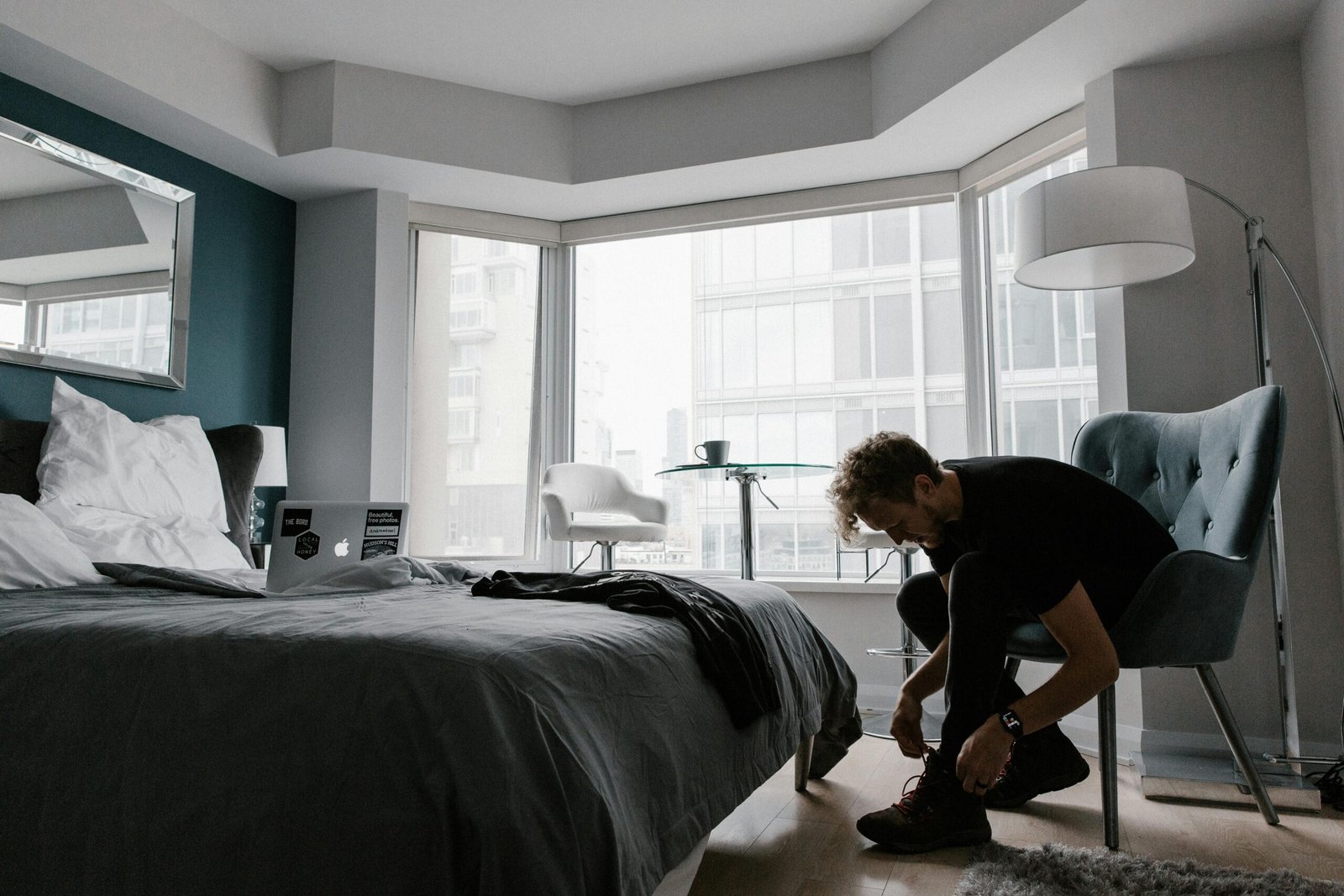In today’s hyper-connected world, it feels like we’re always plugged in. From the moment we wake up until we fall asleep, we’re scrolling through social media, responding to emails, or binge-watching our favorite shows. It’s easy to get lost in the digital noise, and before you know it, you’ve spent hours mindlessly scrolling, only to feel more stressed, tired, and disconnected from the real world.
The truth is, constant digital engagement isn’t just exhausting—it can be detrimental to our mental and physical health. But what if you could press “pause” on the endless stream of information and distractions? Enter the concept of digital detox.
A digital detox isn’t about completely abandoning technology (let’s face it, that’s not realistic for most of us). It’s about taking intentional breaks from screens to recharge, reconnect with yourself, and regain balance in your life. Ready to hit refresh? Here’s everything you need to know about the art of digital detox, why it’s important, and how you can start disconnecting today.
1. What Is a Digital Detox and Why Is It Important?
Simply put, a digital detox is a period of time when you intentionally disconnect from digital devices—like smartphones, computers, tablets, and social media platforms. The goal is to step away from the constant flow of notifications and stimuli to help clear your mind, improve your focus, and promote a sense of well-being.
Here’s why a digital detox is so important:
- Mental Health Benefits: Constant exposure to screens can contribute to anxiety, stress, and even depression. Social media, in particular, can make us feel inadequate or overwhelmed by the curated, highlight-reel lives of others. Taking a break helps reset your mental state.
- Improved Sleep: The blue light emitted by screens interferes with the production of melatonin, the hormone that regulates sleep. Taking a break from screens, especially before bedtime, can help you sleep more soundly.
- Better Focus and Productivity: Constant digital distractions make it harder to focus on important tasks. By stepping away from your devices, you’ll find that you’re able to concentrate better and be more productive.
- Enhanced Relationships: Digital distractions often interfere with face-to-face connections. Taking time off screens allows you to reconnect with family, friends, and yourself in a more meaningful way.
A digital detox isn’t about avoiding technology entirely; it’s about creating healthier boundaries and finding a balance that allows you to enjoy the benefits of technology without letting it take over your life.
2. Signs You Need a Digital Detox
So, how do you know if it’s time to unplug? If you recognize any of these signs, it might be time for a digital detox:
1. You Feel Constantly Stressed or Overwhelmed
If the flood of emails, notifications, and messages is leaving you feeling anxious or mentally drained, it might be a sign that you need a break.
2. You’re Losing Sleep
Spending hours on your phone or laptop before bed is a recipe for poor sleep. If you’re lying awake at night or finding it hard to wind down, a digital detox can help improve your sleep hygiene.
3. You’re Distracted All the Time
If you can’t seem to focus on tasks or conversations without checking your phone, that’s a clear sign of digital overload.
4. You Feel Disconnected from the Real World
Constantly scrolling through social media can make you feel disconnected from the people and things around you. If you find yourself zoning out or feeling emotionally distant, it’s time to unplug.
5. Your Relationships Are Suffering
If your phone or digital devices are getting in the way of quality time with friends, family, or your partner, it’s time to reassess your screen time.
3. Benefits of a Digital Detox
Let’s take a deeper look at the benefits you’ll experience once you take the plunge and disconnect from the digital world for a while.
1. Mental Clarity and Emotional Well-Being
Taking a break from constant notifications gives your brain a chance to rest and recharge. Without the constant pressure of emails, texts, and social media updates, you’ll feel more focused, calm, and at ease.
2. Better Relationships
When you’re not glued to your phone or laptop, you can actually engage in deeper, more meaningful conversations. Whether it’s with a partner, friends, or family, your relationships will benefit from the quality time you spend together, free from distractions.
3. Increased Productivity
Without the constant pull of digital distractions, you can focus more intently on the tasks at hand. A digital detox allows you to put your energy into what truly matters, whether it’s work, a hobby, or personal goals.
4. More Time for Real-Life Experiences
When you step away from your devices, you open up space for real-life experiences. Whether it’s exploring nature, reading a book, or simply enjoying the present moment, a digital detox allows you to create lasting memories.
5. Enhanced Physical Health
Taking a break from screens can improve your posture, reduce eye strain, and prevent neck or back pain. Plus, it can help you spend more time moving your body, whether through exercise or simply going for a walk outside.
4. How to Start Your Digital Detox
Ready to disconnect but not sure where to begin? Here’s how to get started with your digital detox:
1. Set a Time Limit
You don’t have to go cold turkey—start small by setting specific time limits for your screen use. For example, you might decide to take a two-hour break from screens every morning or evening, or designate one day a week to go device-free.
2. Schedule Tech-Free Zones
Create tech-free zones in your home, such as the bedroom or dining area. This helps you establish boundaries and encourages healthier habits like reading, eating, or spending time with loved ones without the distraction of screens.
3. Turn Off Non-Essential Notifications
Constant notifications can be overwhelming. Start by turning off notifications for social media apps, emails, and news alerts that aren’t essential. This will reduce the constant digital interruptions and help you stay present.
4. Try a Social Media Fast
If social media is a major source of stress or distraction, try a “social media fast” for a set period—whether it’s a day, a weekend, or longer. During this time, avoid checking your feeds, and use the time to reconnect with other activities or people.
5. Create Tech-Free Activities
Find activities that don’t require screens, such as going for a walk, practicing a hobby, reading, journaling, or spending quality time with friends and family. Filling your time with these activities can help you stay engaged and present without needing a screen.
6. Use Digital Detox Apps
There are several apps that can help you stay accountable to your digital detox goals. Apps like “Forest” or “Freedom” block distracting sites, track your usage, and encourage you to take breaks.
7. Be Gentle with Yourself
It can be tough to disconnect from devices, especially if you’re used to constant digital engagement. If you slip up, don’t be too hard on yourself. The goal is to create healthier habits, not perfection.
5. Tips for Maintaining a Digital Detox
A digital detox is not a one-time event, but a practice that can be integrated into your daily life. Here are a few tips to help you maintain your detox habits:
1. Be Intentional with Technology Use
Instead of mindlessly scrolling or watching TV, be intentional with how and why you use technology. Set specific goals for screen time, such as watching a documentary on a topic you’re interested in or reading an informative article.
2. Reevaluate Your Digital Habits Regularly
It’s important to check in with yourself regularly and reassess your relationship with technology. If you find yourself slipping back into old habits, take a step back and refocus on your detox goals.
3. Embrace Mindfulness
Mindfulness is the practice of being fully present in the moment. Try to apply mindfulness not only during your detox but throughout your daily routine. Whether you’re eating, walking, or talking to someone, practice being present without distractions.
6. Conclusion: Find Balance, Not Absence
While we can’t avoid technology completely, the key to a fulfilling and balanced life is moderation. A digital detox helps us regain control over our time, energy, and focus, and encourages us to reconnect with the world around us.
By incorporating digital detox practices into your life, you can improve your mental health, relationships, productivity, and overall well-being. The best part? You don’t have to go all-in—start small, stay consistent, and enjoy the positive impact it has on your life.
So, are you ready to unplug and recharge?
FAQs
1. How long should my digital detox last?
A digital detox can vary depending on your goals. It could be as short as a few hours or as long as a week or more. Start small with a weekend or even a day off, and see how it makes you feel.
2. Will I miss important updates if I disconnect?
It’s natural to worry about missing out, but remember that most digital updates can wait. Prioritize what’s truly urgent and let the rest go for a while. You’ll find that the world doesn’t end when you take a break.
3. Can I still use digital devices for work?
Yes, if your work requires screen time, you can still engage with technology for professional purposes. The idea of a digital detox is to create healthy boundaries, so you can decide to disconnect during your personal time and leave work for work hours.
4. What should I do instead of scrolling through social media?
Try activities that engage your mind and body, such as reading, walking, cooking, or practicing a creative hobby like drawing or writing. These activities will leave you feeling more fulfilled and present.
5. Can a digital detox improve my sleep quality?
Absolutely! Stepping away from screens, especially before bedtime, can improve your sleep quality by reducing blue light exposure and helping you unwind. You’ll fall asleep faster and wake up feeling more rested.




